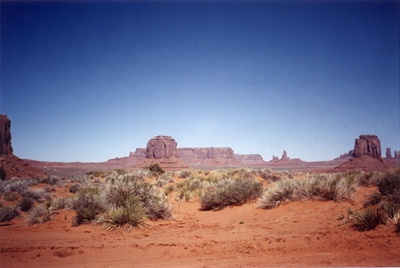All Nonfiction
- Bullying
- Books
- Academic
- Author Interviews
- Celebrity interviews
- College Articles
- College Essays
- Educator of the Year
- Heroes
- Interviews
- Memoir
- Personal Experience
- Sports
- Travel & Culture
All Opinions
- Bullying
- Current Events / Politics
- Discrimination
- Drugs / Alcohol / Smoking
- Entertainment / Celebrities
- Environment
- Love / Relationships
- Movies / Music / TV
- Pop Culture / Trends
- School / College
- Social Issues / Civics
- Spirituality / Religion
- Sports / Hobbies
All Hot Topics
- Bullying
- Community Service
- Environment
- Health
- Letters to the Editor
- Pride & Prejudice
- What Matters
- Back
Summer Guide
- Program Links
- Program Reviews
- Back
College Guide
- College Links
- College Reviews
- College Essays
- College Articles
- Back
Was the Sahara Evergreen?
[Now, the very name Sahara makes one think of the hot, humid climate and one dying of thirst. But very few know that the Sahara was once a beautiful, fertile land where lush greenery surrounded everywhere and rainfall was a common feature. Many people lived and animals inhabited there. Art too, was impressive.
This was Sahara of centuries ago. Then, what transformed the beautiful and fertile Sahara into a horrid desert?? Well, that remains a mystery till date. People flocked around around to unveil the mystery and scientists put forward many reasons, but no one was able to give a solid theory].
Spreading on an area of 3.3 million square miles, the vast Sahara desert was not always like this. This heat was described by Herodotus in about 430 BC. He described it as a desert with hillock of sand and inhabited people with strange and exotic customs.
But, many centuries ago, the Sahara was not always like this. Many centuries ago, it was a green and fertile country. The Negroid people lived there by hunting land and water animals. The archaeological and geological remains reveal this fact. This bewildering feature is highlighted by the cave and rock paintings found at Tasssili N’ Ajjer.
Well, then the question arises to what happened to this perfectly fertile, green land which was full of life and happiness? What caused it to be the perfect death place?
The scientists readon it out as due to the monsoon rains. According to then, theSahara flourished during prehistoric culture as the monsoon rains expanded far northwards. By 10,000 BC, the conditions began to remain moist and from 7000 to 2000 BC, the climate remained wet for most of the part. But, after that, due to some unknown reasons, monsoon rains began to be less and an imbalance was created between rainfall and rate of evaporation. As a result, the moisture soaked up by the sun’s rays was more than the moisture received from the clouds.
But, one theory was put forward that Environment was not responsible for the depraved condition of the Sahara. Human Beings too contributed to it. The increased number of domestic animals destroyed plant life. Mountainous woodlands were burnt off and reduced to grazing lands. And gradually vegetation degenerated- from savanna to steppe and from steppe to desert. The only remnants left were paintings and artefacts which reminded later generations of the past glory of the vast desert land.
We can know about Sahara’s glorious past only in the 19th Century when the Europeans entered the desert. The first three adventurers known to the Sahara were Dixhon Denhan, Hugh Clapperton and Walter Qudney. In 1826, Major Alexander Gordon Laing, a Scotsman crossed the Sahara and became the first European to reach the fabled city of Timbutku. He was murdered there. In 1828 the Frenchman Rene Callie, disguised himself as an Arab started from Timbutku. He reached Morocco after facing torrid heat, whirlwinds, water shortage and often lured by the torment of the mirage.
Callie’s journey was a remarkable feat. From then on, followed the regular journey of the French. Soon Frenchmen embarked on colonial activity- military campaigns and building the Trans- Sahara Railways. For their excursions, they had to produce the definite maps of the area. And the map revealed the true picture of the Sahara. It followed the high mountains, dotted with olives and cypresses.
Despite many catastrophes, the Sahara still exists. The people still lives there. These people continue to practice the disastrous habits of their predecessors, as they plunder the dwindling vegetation and sink deeper wells. Wll they also face the fate of their predecessors? This is a question which haunts every scientist. People look at the sky and ask, ‘’Can Sahara not be made what it was thousands of centuries ago?? A fertile land!!

Similar Articles
JOIN THE DISCUSSION
This article has 0 comments.
